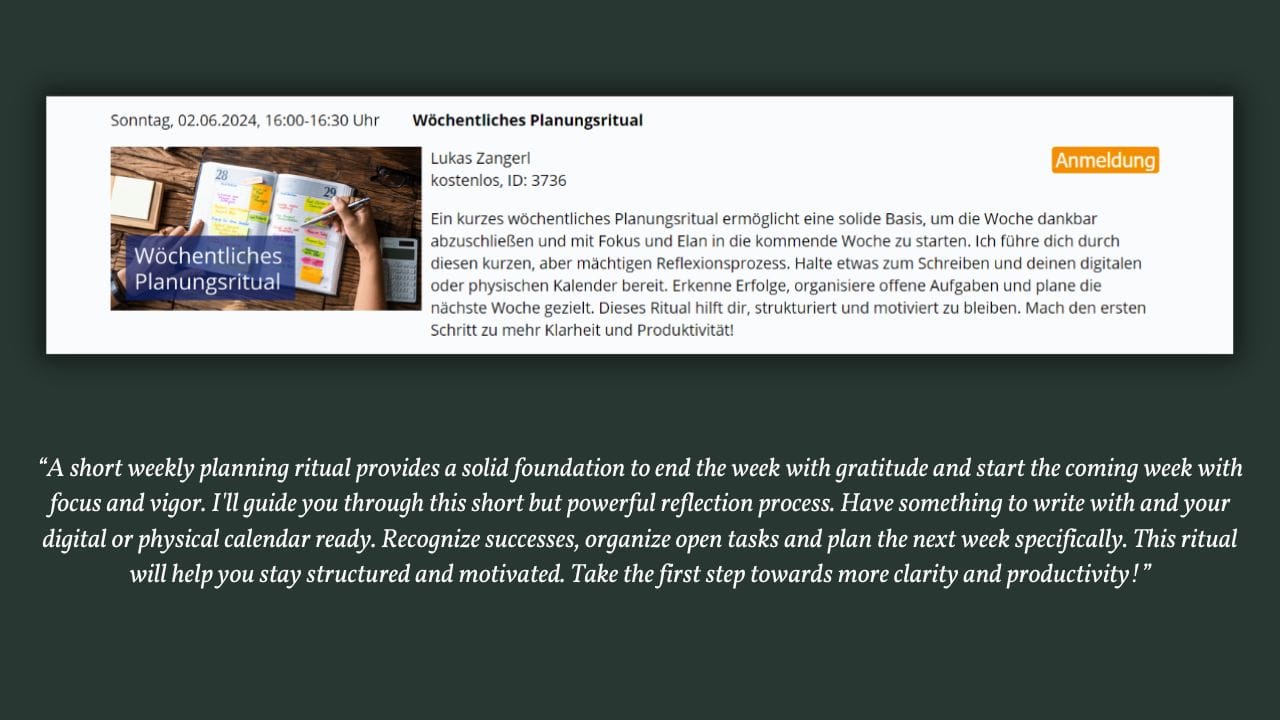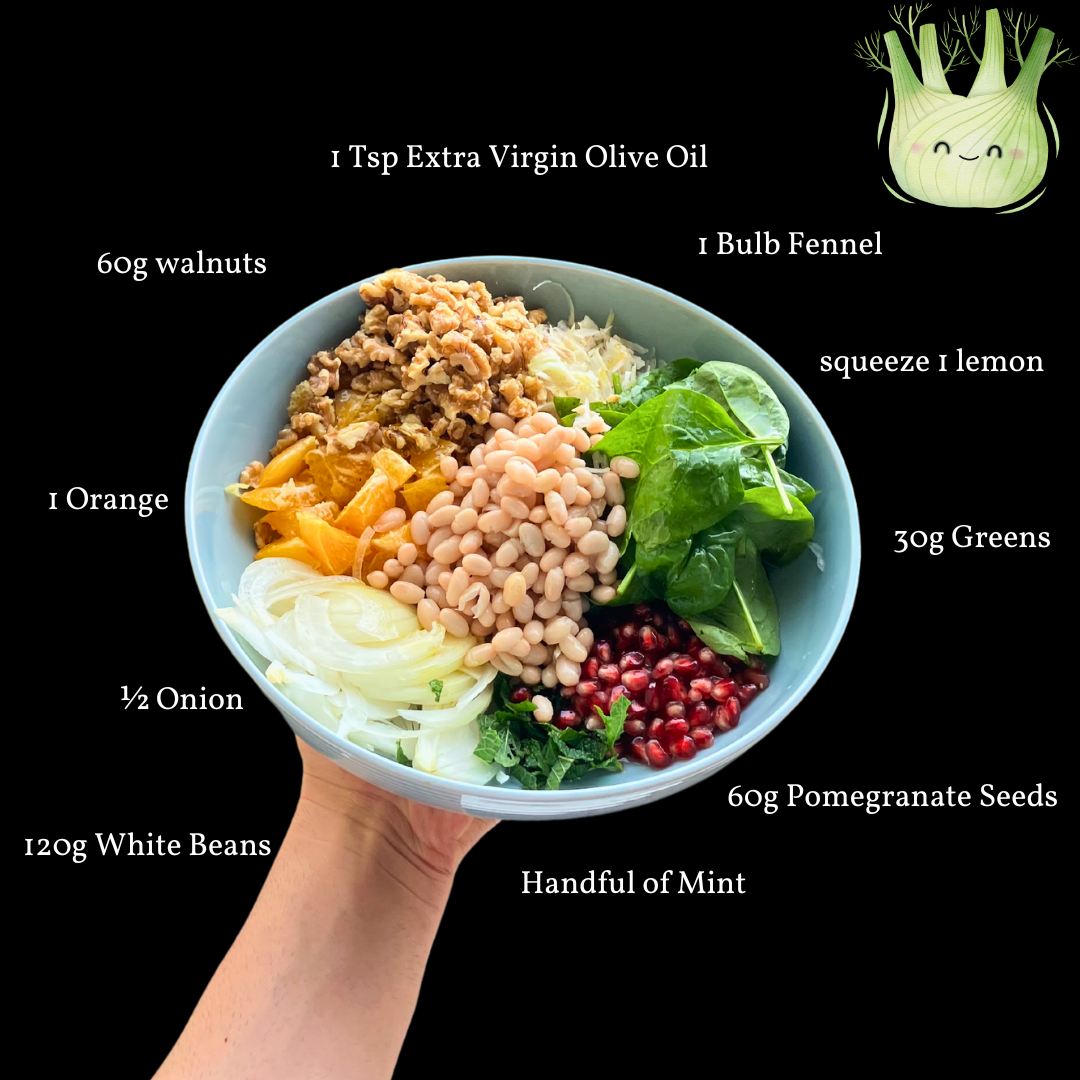🔄 Reflect & Thrive: Mastering Weekly Review Presentations
👋 Hello Friend
Today I gave a weekly review workshop on the largest NLP (neurolinguistic-programming) platform in the world “World-of-NLP”. (15,000 members)
In this newsletter edition, I will guide you through how I use the 4MAT system by Bernice McCarthy to structure every presentation I give. I’ll list 4 scientifically proven benefits of the 4MAT system, explain what the 4MAT system entails, and give you an example of how I used it for today’s weekly review workshop.

“Weekly Review” Signup Form on the world’s largest NLP platform “World-of-NLP”
🧑🎓4 studies that reinforce the benefits of 4MAT
#1. Understanding instead of just memorizing
Students who were taught using the 4MAT approach performed significantly better with higher thinking skills than the control group who were taught using traditional methods. Higher thinking skills refer to cognitive skills such as analysis, synthesis, evaluation, creative thinking, and problem-solving that go beyond mere memorization. Hinds, (1992)
#2. Effective teaching
Teachers using 4MAT are more focused on the actual subject they are teaching in class and less likely to be disturbed by students. Hancock, (2000)
#3. Reduction of learning hours
Considering learning styles in initial instruction (taken into account in the 4MAT system) can significantly reduce the number of repetitions students need to achieve learning objectives. Jacobsen, (1986)
#4. Higher thinking and creative skills
Students taught using the 4MAT system performed better on creative tasks than the control group, based on teacher and independent rater ratings of their projects and final products. Vaughn, (1991)
🏗️How to structure your presentation according to 4MAT
Write these 4 headings with a few lines of space in between them on a Word document: Why, What, How, What for.
WHY - At the beginning of the presentation, the listeners ask themselves: Why should I learn this at all? (generate motivation, e.g. by telling a story)
WHAT - Here you can tell the theoretical background and list the facts about your topic: What am I learning? (information, facts, theoretical background)
HOW - The information learned is put into practice and things are tried out and done: How can I apply what I have learned? (exercises, practical implementation)
WHAT FOR - Explain the skill/information that can be useful in future situations: How can I use this for myself in the future? (application in new & relevant contexts, application to find a solution to a problem)
If you write a paragraph under each of these W-words, you will already have a better understanding of your topic, can overcome mental blocks, and simultaneously appeal to a broad audience.
🤹Practical integration: How used 4MAT to create the Weekly Review Workshop
WHY - Lisa, a busy marketing manager, often rushed from one meeting to the next without a moment to breathe.
One day, she started a weekly reflection ritual, dedicating half an hour every Sunday evening to review her week, celebrate successes, learn from mistakes, and set new goals. Within a month, she noticed a significant change: she felt clearer, more focused, and less stressed. Her relationships with colleagues improved as she engaged in more mindful and intentional conversations.
This simple yet consistent practice boosted her professional success and fostered personal growth and a deep sense of satisfaction.
WHAT - What is the weekly review? It’s a recurring moment, once a week, to reflect on the past week and plan the upcoming one.
HOW - Since January, I’ve asked myself these 5 questions during my weekly review:
- Focus Goals: What are your three yearly goals, and how is your progress?
- Achievements: What did you achieve this week? What are you particularly grateful for? Make a list.
- Challenges: What didn’t go as planned this week? What will you do differently next week?
- Future: What three goals do you want to achieve next week? Why?
- Goal Work: Schedule time blocks to work on achieving these three goals.
WHAT FOR - Today, I’ve given you an example of a weekly review. Next week, I’ll show you another one to demonstrate its flexibility.
Remember, the content and the specific questions you ask yourself are less important than the consistency of the weekly review. Initially, joining a community helped me.
Now, I want to offer the same support.
🥙Wrap-up
The 4MAT system promotes holistic learning by getting listeners to ask themselves:
- Why is this topic important?
- What do I need to know?
- How do I apply this knowledge?
- What can I use this knowledge for in new and creative contexts?
This approach helps your audience not only acquire knowledge but also understand it deeply and apply it practically.
Have a great week. ☀️
xx Lukas
P.S. Are you following me on Instagram to get a glimpse into my personal life?

Post from Instagram: Orange + Fennel Salad from Bryan Johnson’s Blueprint recipes